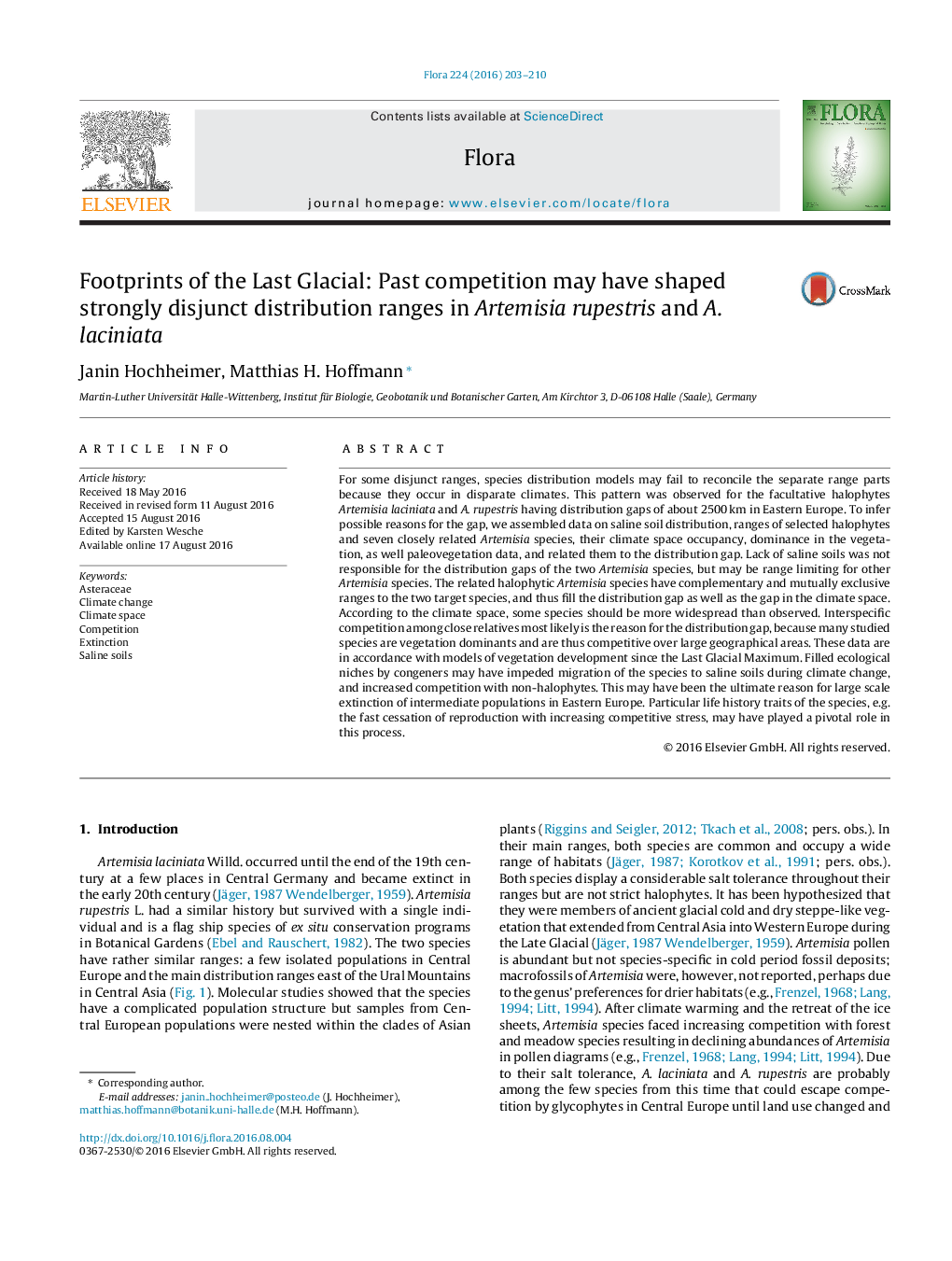| Article ID | Journal | Published Year | Pages | File Type |
|---|---|---|---|---|
| 2179314 | Flora - Morphology, Distribution, Functional Ecology of Plants | 2016 | 8 Pages |
•Disjunct distribution ranges sometimes cannot be modelled with climate data.•The disjunctive range parts occupy different sections of the climate space.•Soil availability limits ranges of some halophytes, but does not explain the disjunction.•Past competition among congeners most likely disrupted the ranges.•Life history traits may explain the extinction process.
For some disjunct ranges, species distribution models may fail to reconcile the separate range parts because they occur in disparate climates. This pattern was observed for the facultative halophytes Artemisia laciniata and A. rupestris having distribution gaps of about 2500 km in Eastern Europe. To infer possible reasons for the gap, we assembled data on saline soil distribution, ranges of selected halophytes and seven closely related Artemisia species, their climate space occupancy, dominance in the vegetation, as well paleovegetation data, and related them to the distribution gap. Lack of saline soils was not responsible for the distribution gaps of the two Artemisia species, but may be range limiting for other Artemisia species. The related halophytic Artemisia species have complementary and mutually exclusive ranges to the two target species, and thus fill the distribution gap as well as the gap in the climate space. According to the climate space, some species should be more widespread than observed. Interspecific competition among close relatives most likely is the reason for the distribution gap, because many studied species are vegetation dominants and are thus competitive over large geographical areas. These data are in accordance with models of vegetation development since the Last Glacial Maximum. Filled ecological niches by congeners may have impeded migration of the species to saline soils during climate change, and increased competition with non-halophytes. This may have been the ultimate reason for large scale extinction of intermediate populations in Eastern Europe. Particular life history traits of the species, e.g. the fast cessation of reproduction with increasing competitive stress, may have played a pivotal role in this process.
